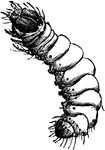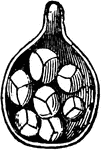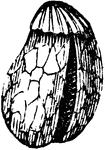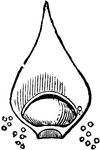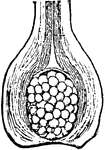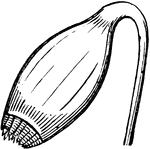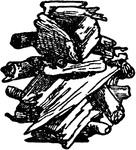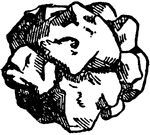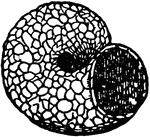
Male Cockroach
"A genus of Orthopterous insects, having an oval or orbicular flattened body, the head hidden beneath…
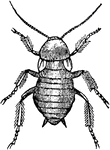
Female Cockroach
"A genus of Orthopterous insects, having an oval or orbicular flattened body, the head hidden beneath…
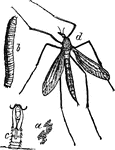
Crane Fly
"Crane-fly (Tipula oleracea): a, eggs; b, larva; c, pupa case as left by the insect, sticking out of…
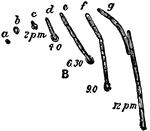
Bacillus Ramosus
"The various phases of germination of spores of Bacillus ramosus, as actually observed in hanging drops…

Bacillus Ramosus
"The various phases of germination of spores of Bacillus ramosus, as actually observed in hanging drops…

Road-Racer
"Road-racer. A full roadster would have the handles a little higher relatively to the saddle, and would…

Womans Bike
"A lady's bicycle with gear-case and dress-guard. The rear frame of the "diamond" type is subjected…

Cup-adjusting Hub
"One end of the cup-adjusting hub, with inward bearings. The cones are formed of one piece with the…

Bicycle Chain
"The "roller" chain consists of a series of outside and inside links. The outside link A is made up…
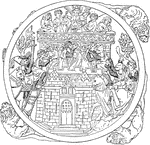
Ivory Carving
"Mirror case illustrating storming of the Castle of Love, French, about 14th century, South Kensington…

Magnetic Telegraph
"Morse magnetic telegraph will be understood by reference to the accompanying diagram, which represents…

Tanner's Beam
"In the case of limed stock the hides, at the proper stage, are withdrawn from the pits and stretched…
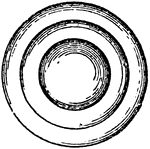
Differential Lens
"Differential Lens.—Horizontal divergence may be obtained to any required amount by varying the radius…
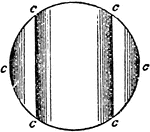
Differential Lens
"Differential Lens.—Horizontal divergence may be obtained to any required amount by varying the radius…

Differential Lens
"Differential Lens.—Horizontal divergence may be obtained to any required amount by varying the radius…
Ruling Pen
A form of pen used for drawing lines of even thickness. It commonly consists of two blades which hold…

Saggars
A box or case of hard potery in which porcelain and othe delicate ceramic wares are inclosed for baking.

Double-acting Cylinder
"The first alteration to be noticed in the double-acting engine is that of the cylinder. To insure its…

Double-acting Cylinder
"The first alteration to be noticed in the double-acting engine is that of the cylinder. To insure its…

Camera Obscura
"Camera obscura strictly signifies a darkened chamber, because the room must be darkened, in order to…
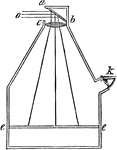
Camera Obscura
"Camera obscura strictly signifies a darkened chamber, because the room must be darkened, in order to…
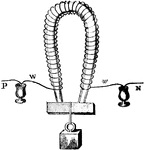
Magnet
"The coils of wire may begin near one pole of the magnet and terminate near the other, or the wire may…

Break Lathe
"Break lathes can take in work of considerable length as well as of large diameter,—the treble-geared…
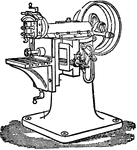
Shaping Machine
"For work of moderate size shaping machines, which are more recent indroduction than either slotting…

Portable Microscope
"Nachet's Portable Compound and Dissecting Microscope, as packed in case." —The Encyclopedia Britannica,…

Primitive Crystal
"In this the four lateral planes are rectangular and equal; they may be either oblong or square; in…

Jungermannia
Fructification of a Jungermannia, its cellular spore-stalk, surrounded at base by some of the leaves,…

Archime' dean Screw
A cylinder with a triple threaded screw in a water tight case that revolves ater to the top for the…

Walking-Fern
A spore-case from the Walking-Fern, Camptosorus, just bursting by the partial straightening of the incomplete…

Mnium
Mnium cuspidatum's spore-case, with top of stalk, focusing on the lid and outside of the peristome.
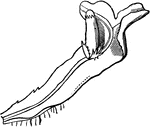
Liverworts
One of the frondose Liverworts, Steetzia, otherwise like a Jungermannia; the spore-case not yet protruded…

Riccia
Spore-case torn out, and spores; one figure of the spores united; the other of the four separated.


